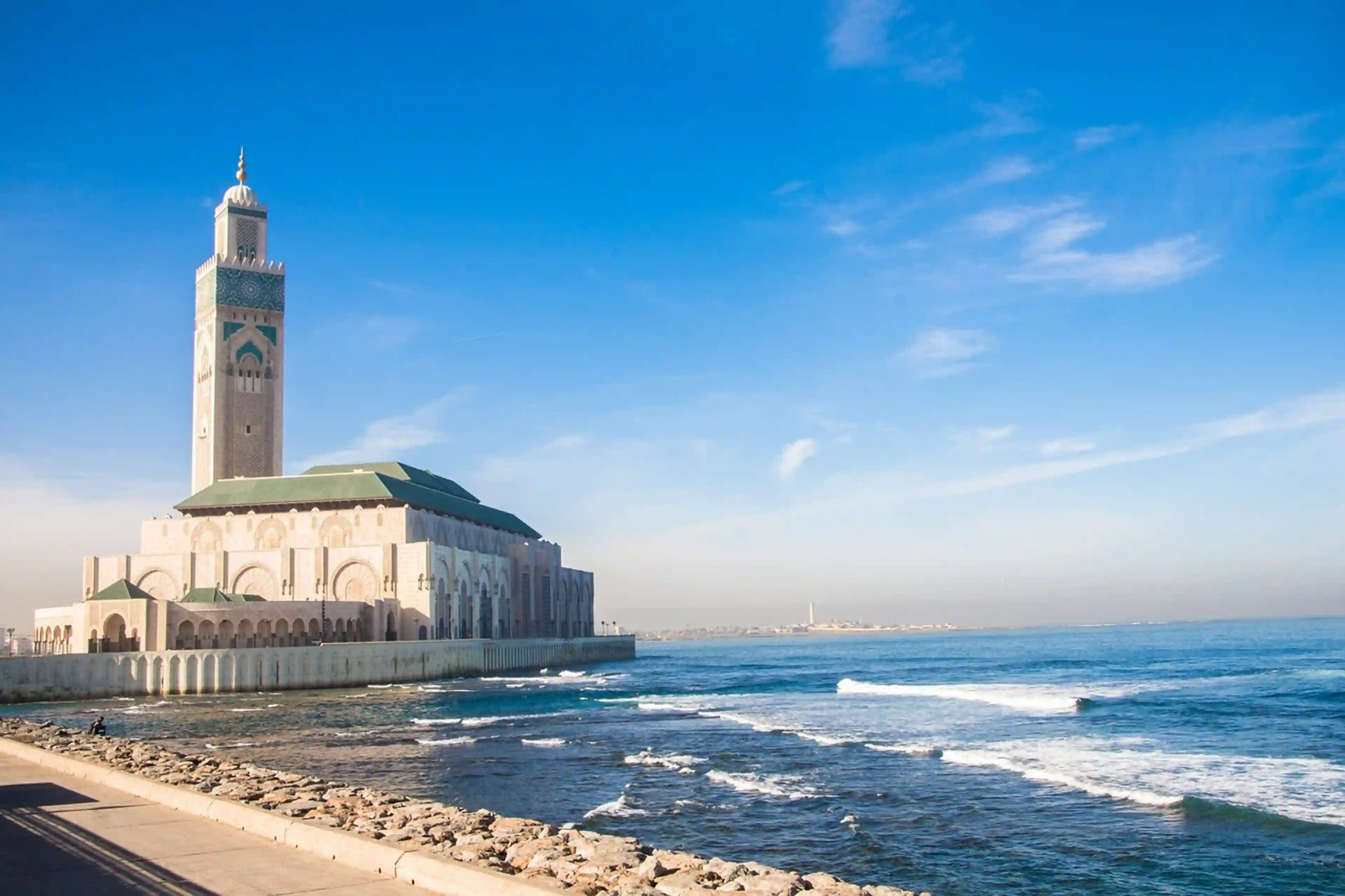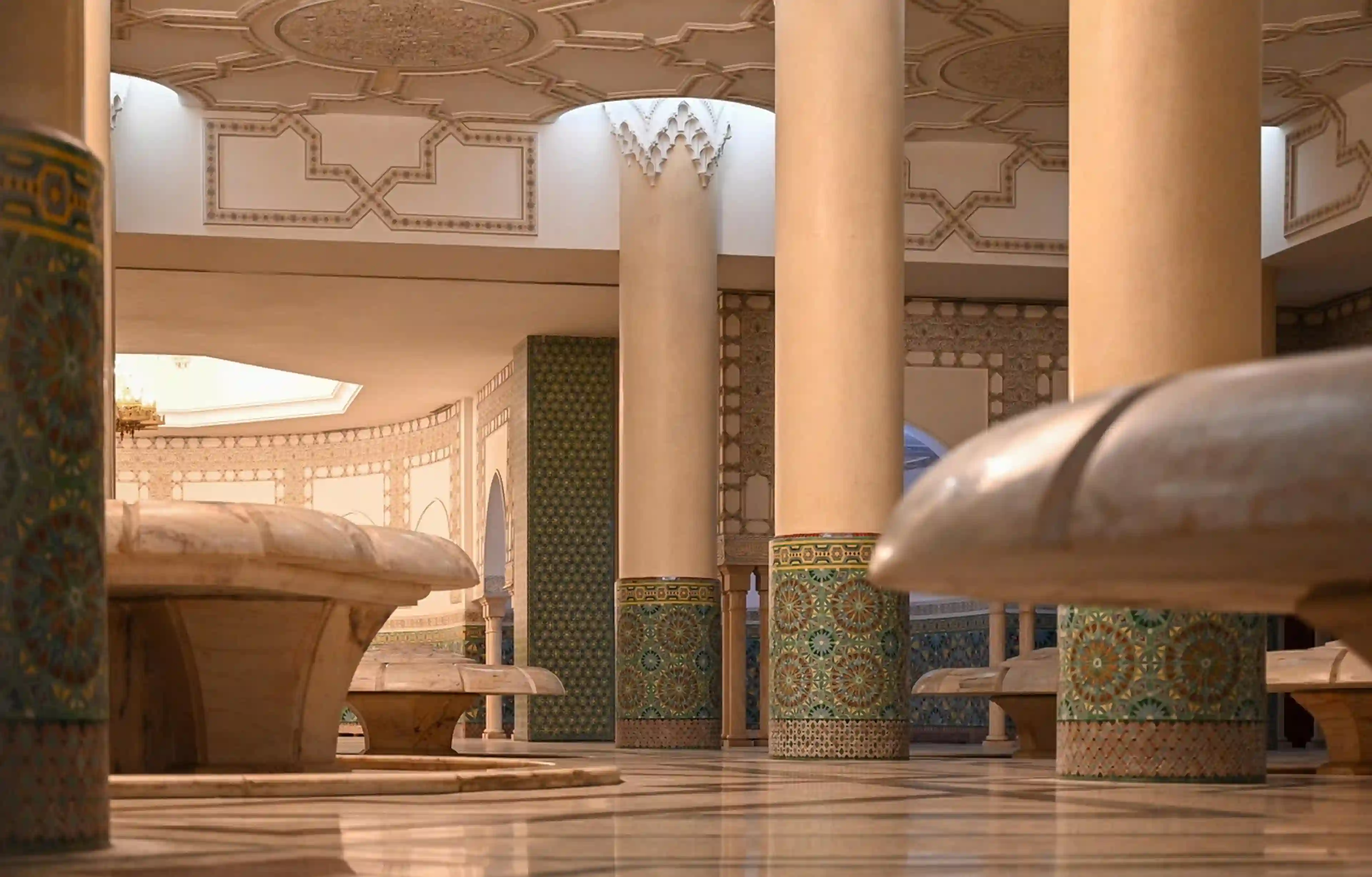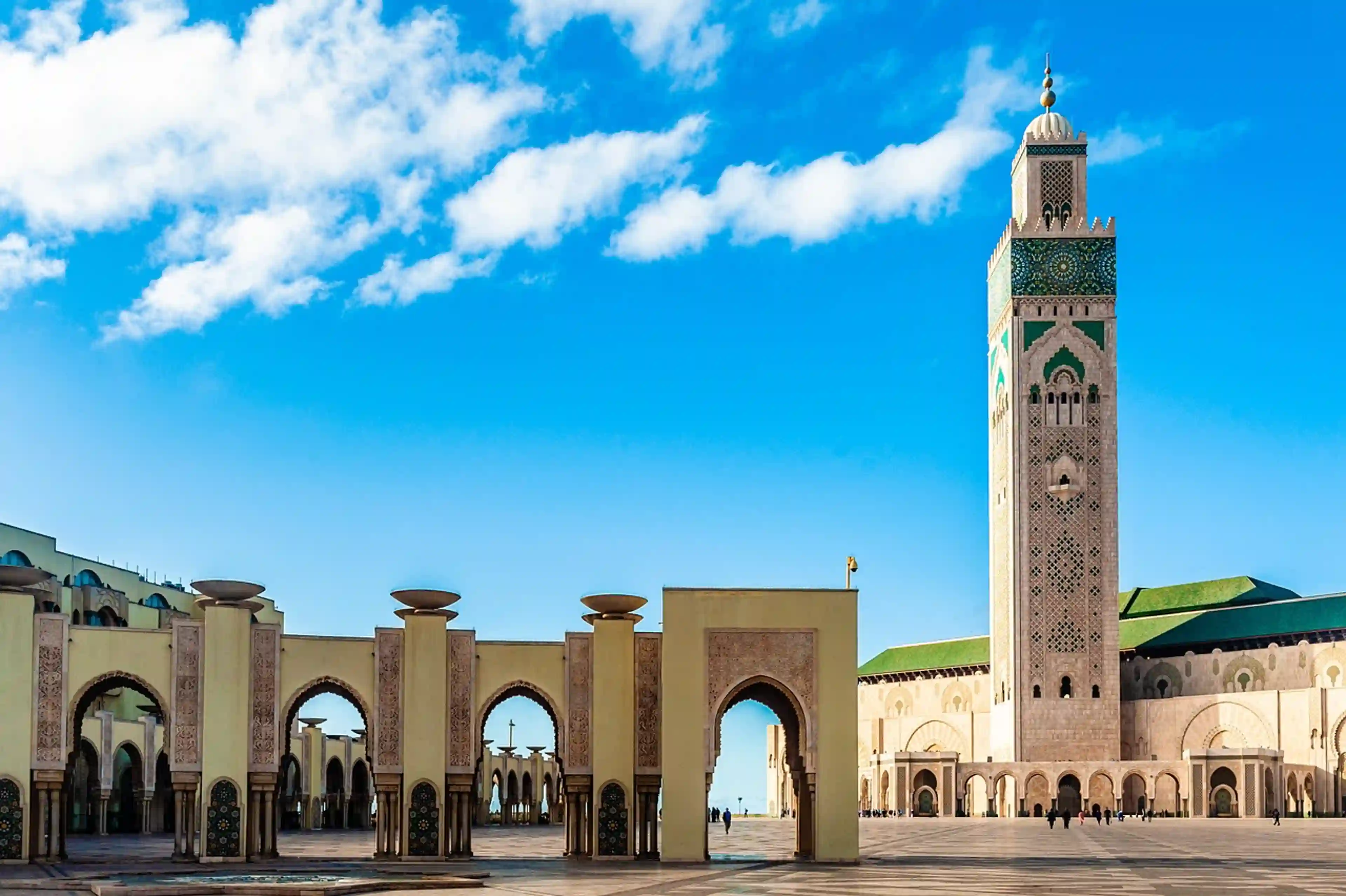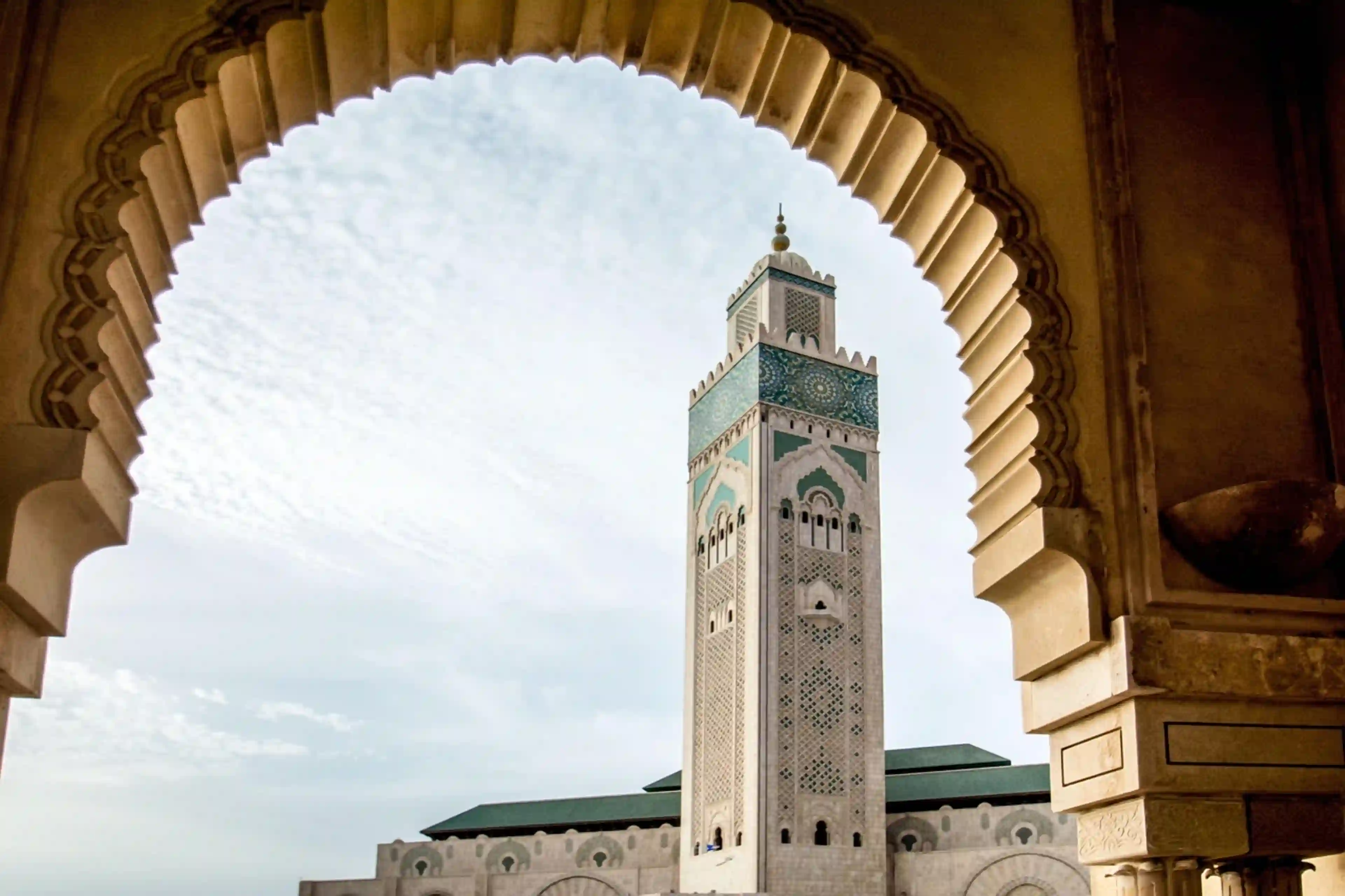Casablanca
General presentation
Top 50
History, culture & traditions
Travel advice
Wikipedia
Viator activities
Tiqets activities
Overall presentation
Casablanca stands as the largest city in Morocco and its essential economic center. With a population exceeding 3.7 million inhabitants, this metropolis perfectly embodies the dynamism and modernity of contemporary Morocco. Recognized as one of the top five global cities on the African continent alongside Cape Town and Nairobi, it represents a major crossroads between Moroccan tradition and international influences. This cosmopolitan city offers visitors a unique experience where cultural authenticity and contemporary urban development blend together.
Geographical situation
Located on the Moroccan Atlantic coast, the city covers an area of 386 km² and is strategically positioned about 80 km south of Rabat, the capital of the kingdom. This privileged location makes it a natural access point to the rest of the country and serves as a gateway to the African continent. Its maritime façade gives it a unique character, between oceanic influences and a Mediterranean atmosphere.
Ambiance and character
The atmosphere in this metropolis perfectly reflects its status as a dynamic cosmopolitan city. Moroccan traditions flourish harmoniously alongside international influences, creating a unique urban identity. The richness of the cultural scene is manifested through numerous theaters, art galleries, and festivals that testify to the openness and diversity of this modern city. This cultural effervescence makes the city a living laboratory where the Moroccan art of living is constantly reinvented.
Climate
The Mediterranean climate with a strong oceanic tendency characterizes this coastal destination. Winters are particularly mild with average temperatures around 12°C, while summers remain moderately warm with an average of 25°C. Precipitation mainly occurs during the winter season, with summer generally marked by characteristic dryness. This mild climate, tempered by oceanic influences, contributes to the enjoyment of urban life throughout the year.
Best season to visit
The high tourist season extends from June to September, during which tourist influx can lead to an increase in hotel rates. To benefit from ideal weather conditions while enjoying more advantageous rates, the transition months are particularly recommended:
- April and May: pleasant temperatures and lush nature
- October and November: autumn mildness and reduced crowds
These periods offer the best balance between climate comfort and economic accessibility.
Access
Mohammed V International Airport is the main gateway to the destination, recognized as the most important in the Maghreb. Located about 30 km south of the city center, it hosts more than 50 airlines providing connections to over 100 global destinations.
Rail transport offers an attractive alternative with a well-developed network connecting the main cities of the kingdom. The high-speed line, in particular, allows travel to Tangier in just 2h10, illustrating the modernization of the Moroccan rail network.
Internal transport
The urban transport network is experiencing remarkable expansion with modern and efficient infrastructures:
Tramway: A modern system launched in 2012 featuring four lines that cover 74 km with 110 stops, providing extensive service throughout the urban area.
Casabusway: High-level bus network with two lines operational since 2024, effectively complementing the public transport offering.
Taxis:
- Small red taxis for intra-urban travel
- Large white taxis for longer and inter-urban journeys
This diversity of transport options greatly facilitates movement within this sprawling metropolis.
Top 50
Wikipedia
Viator activities
Tiqets activities



